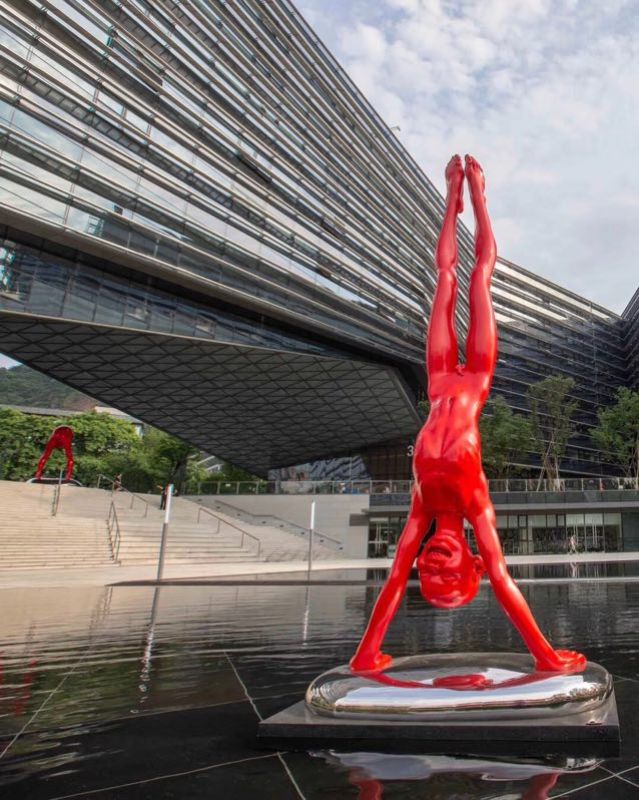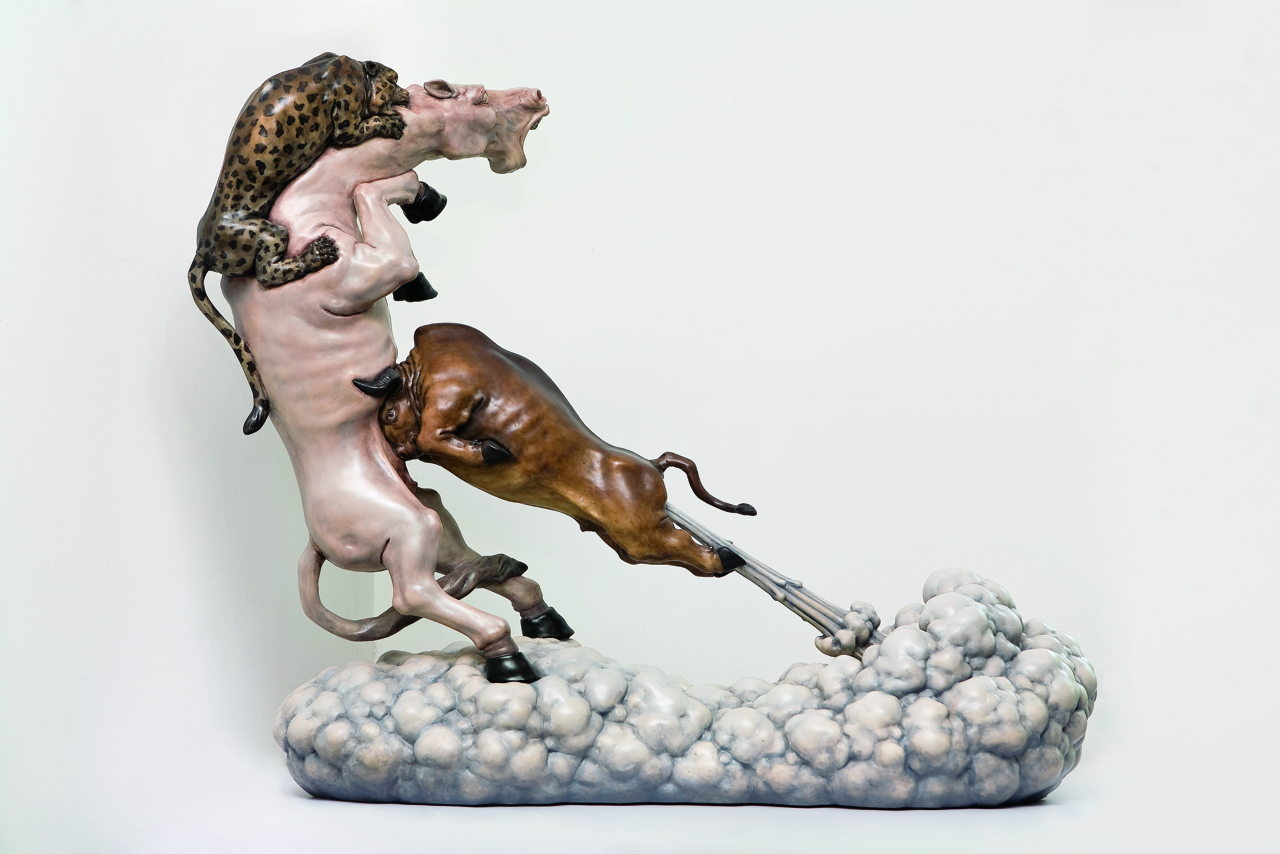
All About Artists
Chen Wenling: The Parallelism Of Humankind And The Animal Kingdom
By Fan Di'an and Yin Shuangxi
Red Memory
Chen Wenling's art reveals a strong new realism. He is sensitive to the hedonism of society in an era of rapid expansion of consumption and has been searching for a language that expresses, exposes and criticizes this secular reality.
The result is an opportunity to explore the "biological" nature of humans and animals, as well as their expressions. His works depict people in a state of ecstasy, exposing the nature of materialism in the state of extreme self, which can also be regarded as an artistic enlargement of the concept of consumerism. He shapes people and animals in large numbers, in order to express the disappearance of humans and animals, as well as their natural behaviors. In his works, human expression is depicted to be as simple as animals, while the animals have anthropomorphic moods and desires. Be it a person or animal, they experience the same emotions and disorders.
港湾Harbor
This is a method of juxtaposing “personification” and “pseudo-materialization”. Chen Wenling developed such a method during his process of artistic exploration, and also used it to increase the value and reproduction of language in his continuous series of works. This forms a self-sufficient developmental trend with an intrinsic driving force.
- Fan Di'an
Dean of the Central Academy of Fine Arts
Vice chairman of the Chinese Artists Association
Between Scylla and Charybdis
The animals and humans in Chen Wenling's works compete with each other, which reflects both reality and fables. Fables are stories that are satirical or persuasive, which usually convey profound truths and meanings through simple stories, in order to make the language accessible. In fables, the most important rhetorical method is the “personification” of animals and plants, otherwise known as the “animation and planting” of the characters. This shows that as part of natural life, human beings are truly integrated with animals and plants, and share similarities in their thinking and behavior, such as the desire and acquisition of food as well as the synergy and competition of survival they experience.
—Yin Shuangxi
Professor of the Central Academy of Fine Arts
PhD Tutor






